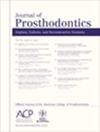Comparison of trueness, time, and number of images among different denture digitization protocols
Abstract
Purpose
To compare trueness, time, and number of images of different denture digitization protocols.
Materials and Methods
Maxillary and mandibular complete prostheses (n = 10) were fabricated and attached with four fiducial markers. Reference scans were obtained using a laboratory scanner. Test scans were obtained using three different protocols: intraoral scanner (IOS) with manufacturer's scanning pattern (MA), IOS with rolling scanning pattern (RO), and IOS- polyvinylsiloxane technique (IOS-PVS). The scan time and number of images taken were recorded for analysis. Using 3-dimensional (3D) inspection software (Geomagic control X), corresponding test scans were superimposed to the reference scan using overall best fit. For trueness analysis, the root mean square (RMS) value of the overall best-fit superimposition was calculated. One-way ANOVA followed by Games-Howell and Tukey post-hoc tests were applied to analyze trueness, scan time, and number of images. Qualitative analysis of trueness was performed using 3D color mapping.
Results
The lowest RMS value was in the mandibular RO protocol (0.10 ±0.01 mm). The highest RMS value was mandibular scans of the IOS-PVS protocol (1.46 ± 0.09 mm). The longest digitization time was recorded in the maxillary MA group (3.34 ± 0.70 min), while the shortest was in the mandibular RO protocol (2.48 ± 0.56 min). Qualitative analysis revealed that deviation in IOS-PVS protocol occurred around the border area of the prosthesis.
Conclusion
The denture digitization protocols tested significantly affected trueness, total scanning time, and number of images. Digitizing dentures using the RO protocol improved trueness and reduced scanning time and the number of images.


 求助内容:
求助内容: 应助结果提醒方式:
应助结果提醒方式:


